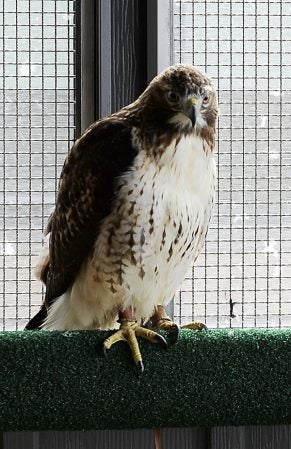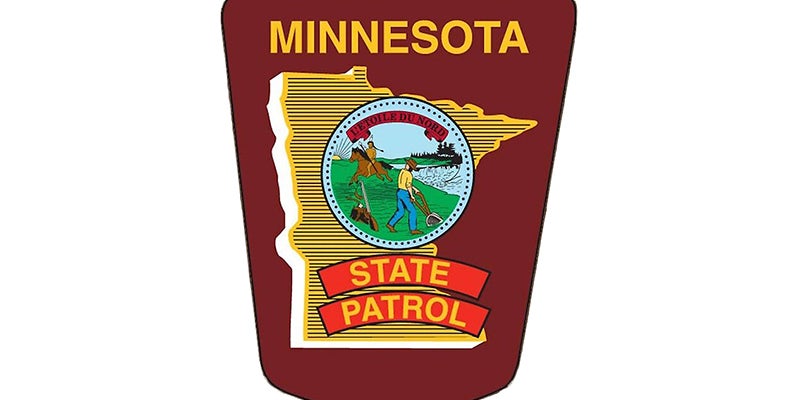The Wide Angle
Published 7:01 am Sunday, May 14, 2017
On Tuesday morning, Wiyaka, one of two new red-tail hawks at the Jay C. Hormel Nature Center, decided to introduce herself by trying to land on my head.
Or at least that’s what I told myself. It’s better than the alternative — the idea of her eyes were bigger than her stomach and my head, topped with a ponytail of long hair somehow looked appetizing.
Not sure if that’s an honor with hawks or not.
Standing with Julie Champlin in the two hawks’ enclosure, it was the first time I got to meet the two hawks, gorgeous in their posture on the perch, albeit a tad nervous. After all they’ve only been in Austin since Good Friday and this was yet another new face, putting a strange box to its face and creating a loud, seemingly obnoxious clicking sound.

You had better make me look good or else.
Sha, the male, seemed especially nervous, his wings shaking noticeably. Enough so that I was feeling bad, standing in their home, knowing that in some small part I was the reason for the nerves.
Wiyaka and Sha will continue a long tradition with the nature center as bridges between our society and the nature they came from and in a very small way, have taken me along for the ride the last couple years.
While not near as close as Julie was, I became instantly connected to long-time nature center resident Red, the former red-tail hawk that after 33 years with the nature center died in 2013. There was some question as to whether or not he might have been the oldest living hawk in captivity, but it was hard to pinpoint that. He was adult when he came to the nature center with no specific way of telling how long he had lived in the wild. He was at least 35 years old, but aside from, it was up in the air.
It was hard not to be connected to Red. He was a strong-looking bird and captivating to watch, the way he took in his surroundings, always on the alert. I had the opportunity to do a number of stories on Red, most notably when age and illness were taking its toll.
The raptor’s strength was most notably displayed during that time period. At the brink of death, the raptor rebounded and gave the nature center a few more years before finally succumbing.
While Red and I were not fast-friends — I certainly wasn’t able to waltz in, put on the glove and take him for a walk — I don’t mind saying that I was a little emotional when I got the news.
In some ways I got more access to Red than a lot of people and whether I imagined it or not, Red always seemed comfortable enough around me to allow me get close. I’m sure I’m not the only one who can say that, but it certainly wasn’t the masses who could say that.
It made for a special connection to Red.
Now, just four years later there is Wiyaka and Sha and their jobs are no less important than Red’s was. They are to be ambassadors from a world where, and let’s be frank here, is often times under appreciated these days.
They, along with the nature center’s barred owl, Guka, carry the important responsibility of reminding us that there are other living creatures in this world we must live with. It’s not just our world.
It was an honor to share the hawk’s living space with them, even for a short space of time and now, thinking back and the fact that I still have a complete scalp, I see it as a fortunate thing that my day on that Tuesday included physical contact with such a majestic animal.
In the years to come, I hope to get closer to these two — or as much as they and the nature center will allow me. I certainly will enjoy, each time I visit the center, either on my own or as part of my job, stopping by and saying hello.
In a way these two are another connection to Red, who helped forge these opportunities at the nature center, as I hope that Julie and the rest of the staff feel as well. It’s a special opportunity to interact with these creatures and nobody should take for granted the chances that affords.


